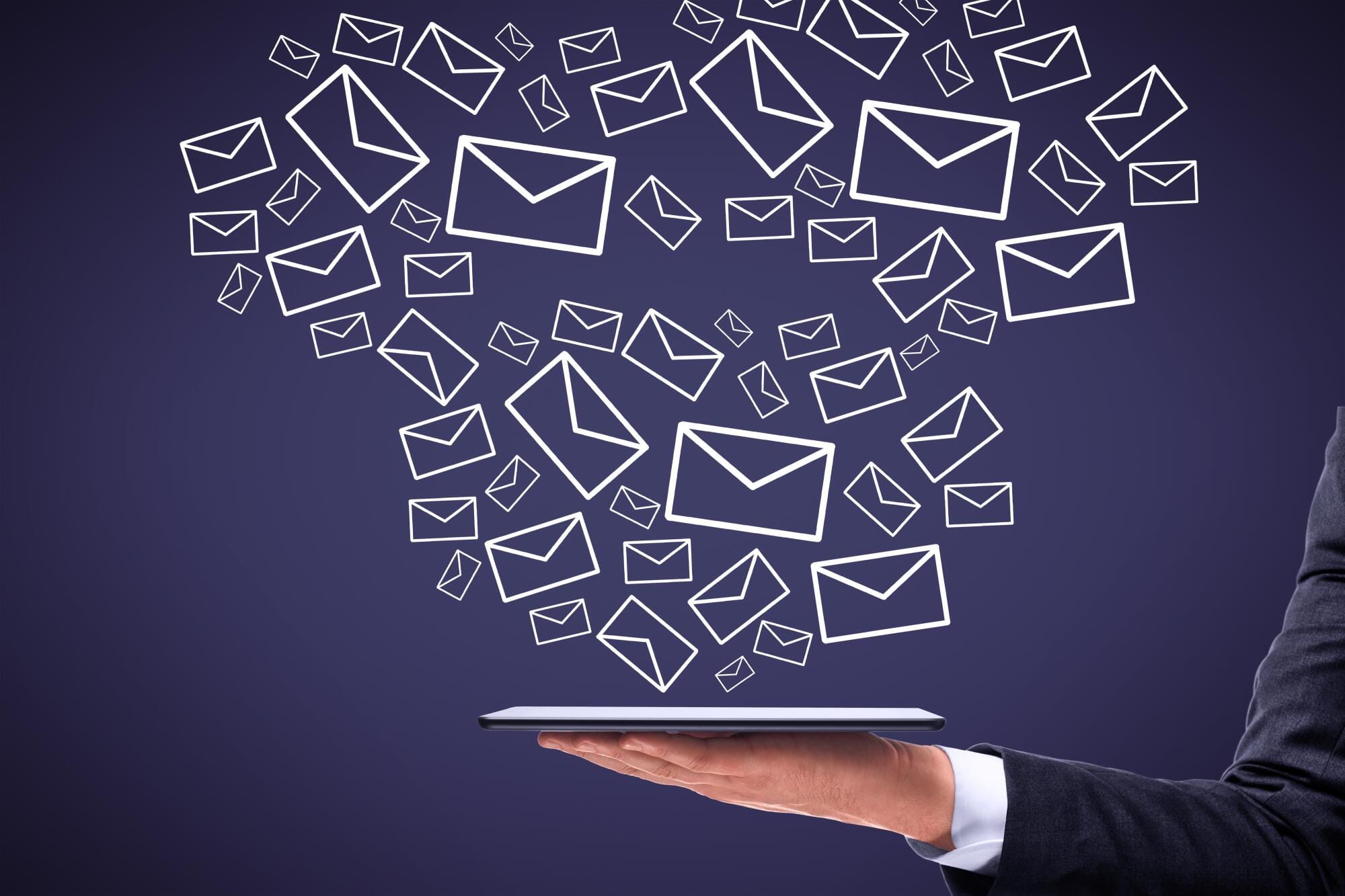According to Nexa Learning, the average office worker receives 121 emails each day, with nearly half identified as spam. This overwhelming volume makes it hard to maintain a clutter-free inbox and keep track of what's truly important.
Today, we're taking a closer look into the best email filters, exploring top choices to help streamline email management and improve productivity. From spam filters to advanced sorting tools, this guide covers key strategies to optimize your inbox effectively.
Email Filters: Why They Matter
Email filters are tools that help you sort incoming messages based on criteria you set. They organize emails by moving them to specific folders, labeling them, or even deleting spam automatically. Filters improve inbox organization and make email management smoother, especially for those with a high volume of messages.
There are three main reasons why email filters are valuable:
- They streamline email management
- They protect against spam
- They allow for customization
Streamlining Email Management
Filters can help you cut down the time spent manually sorting messages. By using filters to move certain emails directly into folders, you won't have to sort through everything to find what matters.
It frees up time and keeps important messages from getting lost in a cluttered inbox. Whether you're sorting work emails from personal ones or prioritizing messages from specific senders, filters can simplify your daily email experience.
Protecting Against Spam
Spam filters are a common type of email filter. They catch emails that come from unknown or suspicious sources and redirect them away from your main inbox.
These filters shield you from phishing attempts and other unwanted content. The best spam filters work in the background, ensuring that harmful or irrelevant emails never make it to your inbox, which makes your email experience safer and less cluttered.
Customization
Email filters allow for a high level of customization. You can set rules to organize messages by sender, keywords, or topics, creating a personalized structure for your inbox.
For instance, you might set up filters to highlight messages from your manager or sort emails about a particular project into a dedicated folder.
Types of Email Filters
Email filters come in various types, each serving a unique purpose for managing messages. Most filters fall into three main categories:
- Spam filters
- Priority filters
- Custom filters
Spam Filters
Spam filters are perhaps the most well-known. They screen out unwanted messages, blocking emails that appear to be junk or contain harmful content.
They rely on certain criteria, such as the sender's address or specific words in the message, to identify potential spam. Many popular email providers include built-in spam filters to keep unnecessary messages from reaching the inbox. They provide a safer email experience, shielding users from phishing attempts and reducing the clutter of irrelevant content.
Priority Filters
Priority filters focus on organizing important emails, so users don't miss crucial information. This type of filter often works by identifying messages from specific contacts, marking them as high-priority, or placing them in a separate folder for easy access.
It's especially helpful for busy professionals who want to ensure emails from key contacts are always visible. Priority filters also help manage the flow of emails, keeping essential messages distinct from less urgent ones.
Custom Filters
Custom filters offer the most flexibility, allowing users to create specific rules for sorting messages. With custom filters, users can set conditions based on keywords, subjects, or sender information to route emails into designated folders.
The filter works well for those who need a tailored approach to email management, as it lets users group messages by project, topic, or contact.
Best Email Filters for a Clutter-Free Inbox
When it comes to managing email effectively, the best email filters can make all the difference.
Gmail has a robust system of tabs and categories that make it one of the best options for managing email. Gmail's primary inbox is split into sections like Primary, Social, and Promotions, allowing users to separate emails based on content type.
The layout helps prevent promotional emails or social media notifications from flooding the main inbox. Gmail also supports custom labels and filters, which provide users with the ability to categorize emails based on specific criteria, such as sender or keywords in the subject line. This level of control over email sorting keeps the inbox organized and makes it easier to locate important messages.
Outlook
Outlook offers a similar yet distinct approach with its Focused Inbox feature. It automatically sorts emails into two categories: Focused and Other. The Focused Inbox highlights emails from frequently contacted people, ensuring that priority messages are always visible.
Less important emails, like newsletters or advertisements, move into the Other tab, reducing clutter and keeping the main inbox focused on high-priority content.
Outlook's rule-setting feature allows users to further customize their inbox by defining rules for emails from particular senders or subjects, making it easy to manage large volumes of messages.
Apple Mail
Apple Mail, while often seen as straightforward, also offers effective email filtering tools. Users can create smart mailboxes, which are folders that collect emails based on defined criteria.
For example, you could create a smart mailbox for messages from specific contacts or those with attachments. Apple Mail's rules allow for further customization, automatically directing messages to folders, marking them as read, or flagging them based on user preferences. It can be particularly useful for Apple users who want an efficient and streamlined way to manage their emails across different Apple devices.
Inbox Organization Tips
Folders are one of the most straightforward tools for sorting emails. By creating folders based on categories, users can immediately store messages in a place where they'll be easy to locate later.
For example, a user could create folders for work projects, personal emails, and subscriptions, which keeps each type of message separate.
Tags and labels add another layer to sorting by allowing users to apply keywords or color-coded tags to emails. For instance, a user might assign a red label for urgent messages and a green one for tasks that are ongoing.
Automated rules help by automatically sorting incoming emails according to set criteria. Rules can direct emails from specific senders to folders, mark them as read, or even delete them if they're not needed. This reduces the manual effort needed to organize emails and keeps everything running smoothly.
Essential Email Management Tool to Boost Productivity
Email management tools go beyond standard filters, offering extra support to streamline inbox organization and boost productivity. They work by automating certain tasks, such as sorting, decluttering, and unsubscribing from unwanted lists.
They provide options that allow users to tailor their inbox experience, giving them more control over incoming messages. Using these tools can make a significant difference in reducing the time spent on email and enhancing overall efficiency.
Mailstrom is designed for those who need help reducing inbox clutter quickly. It organizes emails into batches based on sender, subject, or time, making it simple to review and delete large groups of messages.
Mailstrom is particularly useful for handling years of email buildup, allowing users to make quick decisions on what to keep and what to discard. By enabling users to clear out large volumes of emails at once, Mailstrom helps users regain control over their inboxes.
Setting Up and Maintaining Email Filters
Setting up effective email filters is the first step toward managing emails efficiently, but keeping them updated is just as important. To get the most from your filters, start by establishing a clear structure that matches your daily needs and typical email flow.
Defining simple rules, like filtering emails from frequent contacts or specific topics into dedicated folders, creates a strong foundation for a well-organized inbox. As new types of emails come in, it's helpful to review these filters and adjust them to keep things relevant.
Maintaining filters means regularly checking their performance. Sometimes, new email habits develop, or different types of messages begin to fill your inbox, which can require small updates to your existing filters.
For instance, if you start receiving emails about a new project, adding a filter for that topic can help keep things organized.
Periodic reviews also ensure that spam filters remain effective in blocking unwanted content. A quick check every few months can make sure everything is working as planned.
Another helpful practice is to label emails by priority. By assigning high-priority labels to essential contacts or time-sensitive topics, you can make sure that the most important emails stand out in your inbox.
It minimizes the chances of overlooking key messages and keeps your inbox running smoothly.
Email Efficiency Hacks
Using the best email filters and management tools can transform a cluttered inbox into an organized, efficient space.
Mailstrom empowers you to take charge of your inbox with tools that adapt to your unique email style. Instead of automated sorting, it groups related emails for easy batch actions, allowing you to clear hundreds at once. With Mailstrom, reaching Inbox Zero becomes achievable in a way that suits you best.
Get in touch today to find out how we can keep your inbox working for you!



